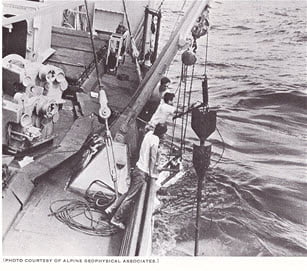For decades, Busada has been extruding sample core tubing for oceanographic research; and off-shore bottom sampling in the search for submerged oil reserves. The clear tubing may be removed intact from the pipe, preserving the original spatial relations of the sample layers, giving a clear view of the physical and chemical makeup of the sampled area.
Clear as glass but tough rather than brittle, our butyrate and polycarbonate tubing is inserted in the coring pipe prior to sampling. The physical characteristics of the plastics permit vibrating or piston drilling operations without compromising the structural integrity of the tubing. This tubing is readily machinable so that the whole sample unit, tubing, and specimens, may be sliced into appropriate segments for detailed analysis.
Historically, the technique is borrowed from the successful application of transparent, removable core liners for deep-sea sedimentary sampling stemming from the work carried out by such firms as Alpine Geophysical Associates of Norwood, New Jersey.

Eyeball-to-specimen examinations of bottom samples are made possible when the vibrator coring rig uses a core liner of transparent plastics tubing. The coring tube is driven into the bottom by a pneumatic vibrator motor (visible inside the top of the frame) once this stabilizing frame has been lowered to the bottom.
Rails on the frame guide the tube and liner, with the operating motor, into the bottom layers. Depth of penetration is dependent upon (1) the nature of bottom layers or (2) the height of stabilizing frame.
The principal advantage associated with a transparent core liner is the ability to evaluate core samples on-the-spot, and to make “go” or “no-go” decisions immediately. An important plus is the preservation of the original relationship of the sample layers which might be disturbed during removal from a non-transparent sleeve. Another advantage is the preservation of the original water contents of the sample even after long storage, due to the special characteristics of polycarbonate plastics.
Alpine Geophysical Associates points out that for their coring, economical butyrate tubing is used except where greater physical strength and lower water permeability are wanted. Then, the choice is the more expensive polycarbonate. Permeability is of significance only where original water content is important and samples are stored in the capped core lines for many weeks before detailed lab analysis.
Bottom sample obtained by a Vibracoring rig (the view is from base to top of rig that is lying on its side on the deck) is quickly removed on the deck by slipping the transparent plastic core liner out of the coring pipe for visual analysis through the liner wall. Transparent Busada liner may be capped for subsequent lab analysis.

